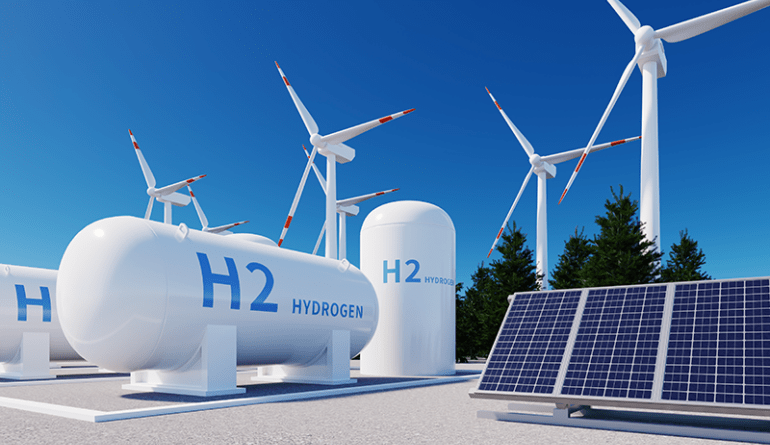Insurance Sector to Act as Catalyst for The Hydrogen Market
As the global energy landscape undergoes a transformative shift, hydrogen emerges as a compelling substitute for traditional fossil fuels, poised to play a pivotal role in the evolving energy transition. With the energy transition market valued at US$183 billion in 2022 and anticipated to surge to US$317 billion by 2032[1], hydrogen stands out as a key player in this dynamic evolution.
On the local economy front, South Africa has the potential to become a leading producer of- and exporter of green hydrogen to the world. According to a report by the World Bank, green hydrogen will be in high demand as countries aim to reduce carbon emissions and as such, South Africa is actively pursuing the Hydrogen Economy as a strategic development opportunity, aiming to capture a significant share of the global hydrogen market, generating economic growth and jobs. The Hydrogen Economy is projected to contribute 3.6 percent to South Africa’s GDP and create 380,000 jobs by 2050. The country is attracting significant private sector interest in green hydrogen projects, solidifying its position as a hydrogen investment destination.²
In this context, the insurance industry emerges as a crucial enabler, holding the potential to facilitate and support the burgeoning hydrogen value chain. According to Jacques De Villiers, head of Aon South Africa’s commercial division, seizing this opportunity necessitates proactive measures from insurers. This involves spearheading product innovation, refining policy language and crafting client solutions that not only bolster the hydrogen market, but also instil confidence by de-risking early mover projects, acting as a catalyst for groundbreaking projects and developments. “Such initiatives not only contribute to lowering companies’ carbon footprint but also enhance their Environmental, Social and Governance (ESG) credentials,” says Jacques.
In this dynamic and evolving landscape, collaboration becomes imperative. (Re)insurers, banks and superannuation funds are urged to forge partnerships with global governments, aligning efforts to strategically invest in sectors of the economy that require support for a successful transition towards net-zero emissions. This collaborative approach is essential to navigate the complexities of the evolving energy paradigm and pave the way for a sustainable and eco-friendly future.
Hydrogen Production and its Applications
– There are three main ways to generate hydrogen:
– Grey hydrogen is produced through steam reforming of natural gas and emits CO2 in the atmosphere.
– Blue hydrogen is produced through steam reforming from natural gas (or coal) into hydrogen and CO2, where CO2 emissions are stored through Carbon Capture and Storage (CCS) or it is re-used.
– Green hydrogen is produced from renewables and is produced by splitting water into hydrogen and O2 (oxygen) powered by electricity from renewable sources with net zero emissions.
An electrolyser is a system that uses electricity to break water into hydrogen and oxygen in a process called electrolysis. Although the fundamental processes of renewable energy and electrolysis plants are relatively well understood, the technology of building large electrolysers and incorporating hydrogen-producing electrolysis plants into existing renewable power infrastructure is still relatively new.
The most promising large-scale applications for green hydrogen over the next 30 years are industrial processes, heating, heavy-duty long-haul transportation and power storage – applications where few other viable options exist.
“Hydrogen could play a significant role in the heating and power sectors, while also having the potential to decarbonise steel and cement production. Its application in the transportation space – especially in long-haul, heavy-duty transportation, including land, sea and air, could be groundbreaking. Hydrogen-powered vehicles have the advantage of shorter refuelling times than battery-powered electric vehicles. For air and sea transport, hydrogen-based synthetic fuels store more energy in less weight than batteries,” explains Jacques.
Investing in the Energy Transition and Hydrogen
The rate of technological innovation is a key enabler for the renewables and energy transition sectors. With new technology comes the need to understand the associated risks and exposures. And while hydrogen is poised to have a massive impact on the energy market, the processes behind it require de-risking to accelerate the deployment of capital.
“Due to the rapid increase in technology innovation that has undergone limited testing, our goal is to develop risk appetite in the insurance market to help these solutions and products become insurable and unlock access to capital for project financing,” says Jacques.
One of the major challenges for the renewables sector, for example, is cyber risk, where the number and severity of cyber threats can seriously impact vital energy infrastructure. Navigating a path to cyber and business resilience is essential to help minimise risk from a financial, operational and reputational perspective. It demands a holistic view that connects proactive risk management, response preparation and risk transfer mechanisms.
New technologies are rapidly evolving, dialling up the challenges and opportunities of workforce resilience. “Faced with a shortage of skilled labour to meet growing operational demands, the sector is likely to utilise talent from subsectors in the wider energy industry, such as oil and gas. As employees transition from fossil fuel subsectors, an untapped pool of talent is available for organisations willing to invest in wide-scale reskilling programs,” says Jacques.
And while these are just two of the many complex risks that hydrogen projects are faced with, insurance is essential for unlocking project finance. As the insurance market evaluates how to provide risk capital to expedite the energy transition, it is important to identify insurers with the risk appetite for new technologies.
“Securing sustainable long-term insurance for all energy sectors starts by recognising they have different needs across the full value chain, including the influence of ESG, risk finance, M&A and talent. Integrated insurance solutions across construction and operational phases, provide seamless cover across multiple interfaces and serve as the foundation for growth and development. Making the hydrogen economy a reality will require governments, corporations, investors and civil society to collaborate in building an environment where low-carbon hydrogen technologies can prosper,” Jacques concludes.




